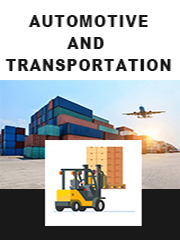Report overview
Automotive pedestrian protection system (PPS) is a system used to decrease a pedestrian's crash with the car. In case of frontal collisions with pedestrians, sensors in front of the vehicle activate the PPS. The complete section of PPS consists of several technologies such as automatic braking and collision avoidance, advanced driver assistance systems, brake assist, driver caution, external airbags, and pop-up bonnets.
This report aims to provide a comprehensive presentation of the global market for Automotive Pedestrian Protection Systems (PPS), with both quantitative and qualitative analysis, to help readers develop business/growth strategies, assess the market competitive situation, analyze their position in the current marketplace, and make informed business decisions regarding Automotive Pedestrian Protection Systems (PPS). This report contains market size and forecasts of Automotive Pedestrian Protection Systems (PPS) in global, including the following market information:
Global Automotive Pedestrian Protection Systems (PPS) Market Revenue, 2018-2023, 2024-2029, ($ millions)
Global Automotive Pedestrian Protection Systems (PPS) Market Sales, 2018-2023, 2024-2029, (K Units)
Global top five Automotive Pedestrian Protection Systems (PPS) companies in 2022 (%)
The global Automotive Pedestrian Protection Systems (PPS) market was valued at US$ 876.7 million in 2022 and is projected to reach US$ 1487.7 million by 2029, at a CAGR of 7.8% during the forecast period. The influence of COVID-19 and the Russia-Ukraine War were considered while estimating market sizes.
Global Automotive Pedestrian Protection Systems (PPS) key players include Bosch, Continental, Autoliv, etc. Global top three manufacturers hold a share over 70%.
Europe is the largest market, with a share about 50%, followed by Japan, and North America, both have a share about 35 percent.
In terms of product, Passive Pedestrian Protection System is the largest segment, with a share over 90%. And in terms of application, the largest application is Passenger Vehicle, followed by Commercial Vehicle, etc.
We surveyed the Automotive Pedestrian Protection Systems (PPS) manufacturers, suppliers, distributors and industry experts on this industry, involving the sales, revenue, demand, price change, product type, recent development and plan, industry trends, drivers, challenges, obstacles, and potential risks.
Total Market by Segment:
Global Automotive Pedestrian Protection Systems (PPS) Market, by Type, 2018-2023, 2024-2029 ($ Millions) & (K Units)
Global Automotive Pedestrian Protection Systems (PPS) Market Segment Percentages, by Type, 2022 (%)
Passive Pedestrian Protection System
Active Pedestrian Protection System
Global Automotive Pedestrian Protection Systems (PPS) Market, by Application, 2018-2023, 2024-2029 ($ Millions) & (K Units)
Global Automotive Pedestrian Protection Systems (PPS) Market Segment Percentages, by Application, 2022 (%)
Passenger Cars
Commercial Vehicles
Global Automotive Pedestrian Protection Systems (PPS) Market, By Region and Country, 2018-2023, 2024-2029 ($ Millions) & (K Units)
Global Automotive Pedestrian Protection Systems (PPS) Market Segment Percentages, By Region and Country, 2022 (%)
North America
US
Canada
Mexico
Europe
Germany
France
U.K.
Italy
Russia
Nordic Countries
Benelux
Rest of Europe
Asia
China
Japan
South Korea
Southeast Asia
India
Rest of Asia
South America
Brazil
Argentina
Rest of South America
Middle East & Africa
Turkey
Israel
Saudi Arabia
UAE
Rest of Middle East & Africa
Competitor Analysis
The report also provides analysis of leading market participants including:
Key companies Automotive Pedestrian Protection Systems (PPS) revenues in global market, 2018-2023 (Estimated), ($ millions)
Key companies Automotive Pedestrian Protection Systems (PPS) revenues share in global market, 2022 (%)
Key companies Automotive Pedestrian Protection Systems (PPS) sales in global market, 2018-2023 (Estimated), (K Units)
Key companies Automotive Pedestrian Protection Systems (PPS) sales share in global market, 2022 (%)
Further, the report presents profiles of competitors in the market, key players include:
Bosch
Continental
Autoliv
ZF
Denso
Outline of Major Chapters:
Chapter 1: Introduces the definition of Automotive Pedestrian Protection Systems (PPS), market overview.
Chapter 2: Global Automotive Pedestrian Protection Systems (PPS) market size in revenue and volume.
Chapter 3: Detailed analysis of Automotive Pedestrian Protection Systems (PPS) manufacturers competitive landscape, price, sales and revenue market share, latest development plan, merger, and acquisition information, etc.
Chapter 4: Provides the analysis of various market segments by type, covering the market size and development potential of each market segment, to help readers find the blue ocean market in different market segments.
Chapter 5: Provides the analysis of various market segments by application, covering the market size and development potential of each market segment, to help readers find the blue ocean market in different downstream markets.
Chapter 6: Sales of Automotive Pedestrian Protection Systems (PPS) in regional level and country level. It provides a quantitative analysis of the market size and development potential of each region and its main countries and introduces the market development, future development prospects, market space of each country in the world.
Chapter 7: Provides profiles of key players, introducing the basic situation of the main companies in the market in detail, including product sales, revenue, price, gross margin, product introduction, recent development, etc.
Chapter 8: Global Automotive Pedestrian Protection Systems (PPS) capacity by region & country.
Chapter 9: Introduces the market dynamics, latest developments of the market, the driving factors and restrictive factors of the market, the challenges and risks faced by manufacturers in the industry, and the analysis of relevant policies in the industry.
Chapter 10: Analysis of industrial chain, including the upstream and downstream of the industry.
Chapter 11: The main points and conclusions of the report.
